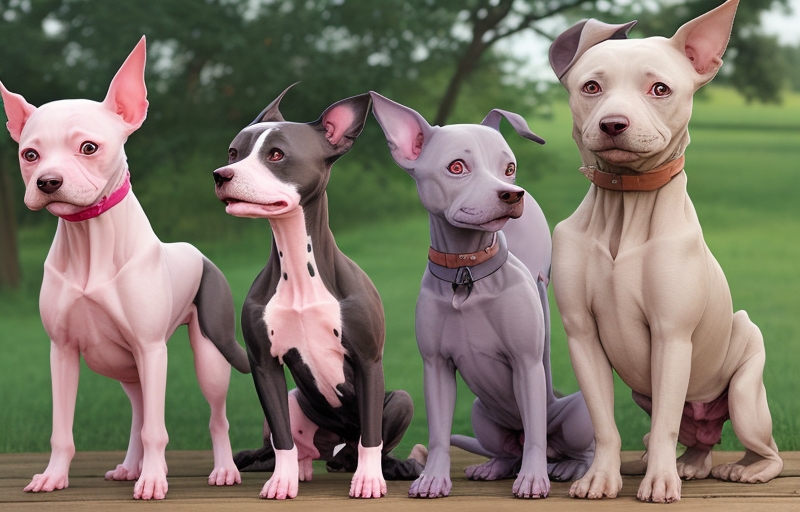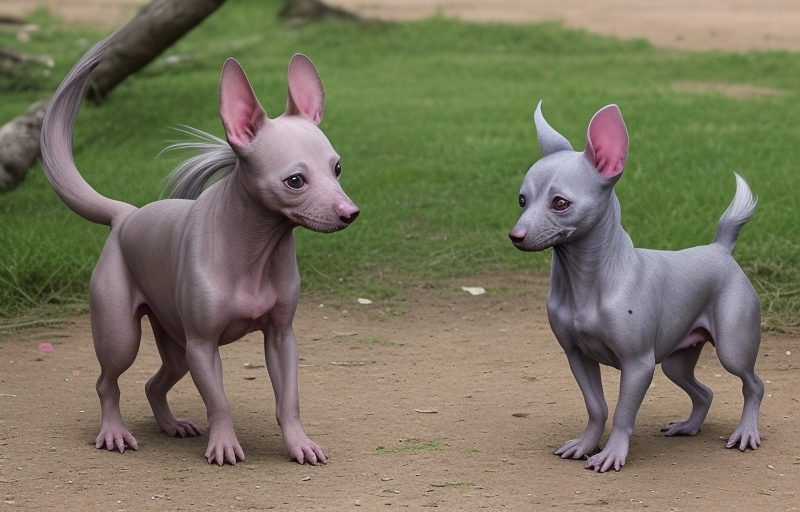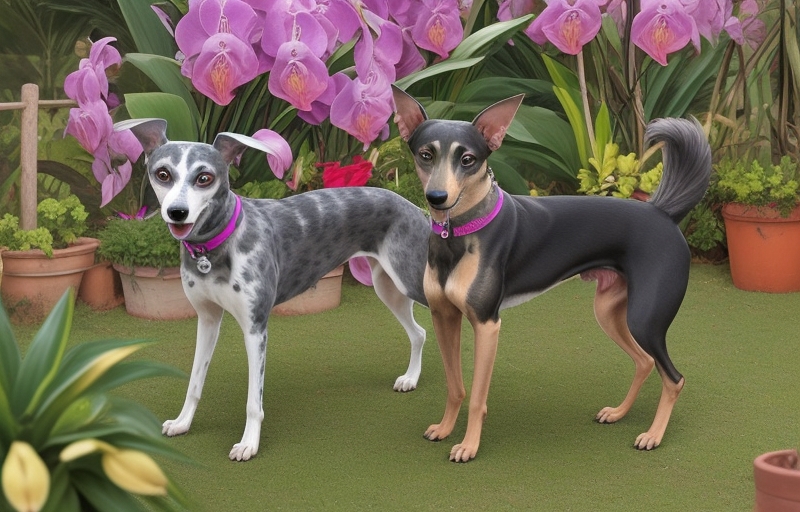Explore the distinctive world of 7 hairless dog breeds, understanding their unique characteristics, care requirements, and the charm they bring to the world of canine companionship. Learn what makes these breeds special and discover if they’re the right fit for your lifestyle.
Introduction:
Hairless dog breeds, with their distinctive appearance and unique charm, have gained popularity among dog enthusiasts. These breeds stand out for their lack of fur, revealing smooth, soft skin that requires special care. In this article, we’ll delve into the world of hairless dog breeds, exploring their characteristics, care needs, and the joy they bring to their owners.
7 Hairless Dog Breeds and Their Unique Characteristics
**1. Chinese Crested:
Characteristics: The Chinese Crested is a small, elegant breed known for its hairless body, with tufts of fur on the head, tail, and feet. They come in two varieties: hairless and powderpuff. The hairless variety has smooth, soft skin, while the powderpuff has a full coat of soft hair.
Care Tips:
- Regular skin care is crucial due to their lack of fur, including moisturizing to prevent dryness.
- Sunscreen is essential when taking them outdoors to protect their sensitive skin from harmful UV rays.
- Clothing may be necessary in colder climates to keep them warm.
Diet:
- A high-quality, small-breed dog food is suitable for Chinese Cresteds.
- Choose a formula that supports skin health, as they are prone to skin issues.
- Some owners opt for a mix of dry kibble and wet food to ensure hydration.
**2. Xoloitzcuintli (Mexican Hairless Dog):

Characteristics: Also known as the Xolo, this ancient breed comes in three sizes: toy, miniature, and standard. Their hairlessness is a distinctive feature, and they have a sleek, muscular build. Some Xolos may have a coated variety as well.
Care Tips:
- Regular baths are essential to keep their skin clean.
- Protect them from extreme weather conditions, as their lack of fur makes them sensitive to temperature changes.
- Dental care is crucial, as they are prone to dental issues.
Diet:
- Provide a balanced diet suitable for their size (toy, miniature, or standard).
- Include lean proteins, such as chicken or turkey, and complex carbohydrates.
- Omega-3 fatty acids can support their skin health.
**3. Peruvian Inca Orchid:
Characteristics: The Peruvian Inca Orchid, or PIO, is a sighthound with a noble appearance and a hairless coat. They come in three sizes: small, medium, and large. Some may have a small amount of short, fine hair on the head and tail.
Care Tips:
- Sun protection is vital, especially for their exposed skin.
- Regular grooming is required to maintain cleanliness.
- These dogs thrive on companionship and may suffer from separation anxiety.
Diet:
- Feed a high-quality dog food appropriate for their size.
- Include foods rich in antioxidants for overall health.
- Consider a diet with joint-supporting ingredients, especially for larger individuals.
**4. American Hairless Terrier:
Characteristics: A lively and intelligent breed, the American Hairless Terrier is a small to medium-sized dog known for its hairless coat. Despite their lack of fur, they are hearty and adaptable, making them suitable for various environments.
Care Tips:
- Regular bathing is necessary to keep their skin clean.
- Protect from the sun and cold weather.
- Due to their energetic nature, regular exercise and mental stimulation are essential.
Diet:
- Opt for a nutrient-rich diet to support their energy levels.
- Choose a formula with a balance of proteins, fats, and carbohydrates.
- Some American Hairless Terriers thrive on grain-free diets, but individual sensitivities may vary.
**5. Hairless Khala (Peruvian Hairless Dog):

Characteristics: The Hairless Khala, native to Peru, is a small to medium-sized breed with a slender and elegant build. They have smooth, hairless skin and a distinctive, primitive appearance.
Care Tips:
- Sunscreen is crucial for protection against sunburn.
- Regular bathing and skincare to prevent skin issues.
- Socialization is important to prevent shyness or aggression.
Diet:
- Provide a well-balanced diet with lean proteins.
- Incorporate fruits and vegetables for added vitamins and minerals.
- Consider a diet with ingredients that support healthy digestion.
**6. Ecuadorian Hairless Dog:
Characteristics: Also known as the Cuy, the Ecuadorian Hairless Dog is a rare breed hailing from the Andean region. They are small to medium-sized with a hairless coat and may have hair on their heads, tails, and feet.

Care Tips:
- Protect them from temperature extremes.
- Regular grooming to maintain cleanliness.
- Provide mental stimulation to prevent boredom.
Diet:
- Feed a diet suitable for their size and energy level.
- Include foods rich in essential fatty acids for skin health.
- Monitor their weight and adjust the portion size accordingly.
**7. Thai Ridgeback:
Characteristics: The Thai Ridgeback is a muscular and athletic breed known for its distinctive ridge of hair along its back. While not entirely hairless, some individuals may have a sparser coat.
Care Tips:
- Regular exercise is crucial for their well-being.
- Sun protection for the exposed skin.
- Early training and socialization to manage their independent nature.
Diet:
- Choose a high-quality dog food with a balance of proteins and fats.
- Include ingredients that support joint health, given their athletic nature.
- Consider a diet with added supplements, such as omega-3 fatty acids.
General Feeding Tips for Hairless Dog Breeds:

- Hydration: Ensure your hairless dog has access to clean water at all times, as they may be more prone to dehydration.
- Special Diets: Some hairless breeds may have specific dietary restrictions or sensitivities. Consult with your veterinarian to determine if a special diet is needed.
- Portion Control: Monitor your dog’s weight and adjust portion sizes accordingly. Hairless breeds may have a higher metabolism, so be mindful of their calorie intake.
- Regular Meals: Establish a consistent feeding schedule to maintain a routine for your hairless dog.
- Avoid Table Scraps: Limit or avoid feeding table scraps, as some human foods can be harmful to dogs. Stick to a well-balanced, commercially prepared dog food.
Conclusion
Hairless dog breeds bring a unique and charming aspect to the world of canine companionship. While their lack of fur requires special care, the joy and loyalty they provide to their owners make the effort worthwhile. If considering a hairless breed, understanding their characteristics and meeting their specific needs will contribute to a fulfilling and rewarding relationship.
FAQs:
Q1: Are hairless dog breeds hypoallergenic?
While no dog is completely hypoallergenic, some individuals with allergies may find hairless breeds more suitable as they produce fewer allergens.
Q2: Do hairless dogs require special skincare?
Yes, hairless dogs need regular skincare to prevent dryness and sunburn. Moisturizing and sunscreen are essential components of their grooming routine.
Q3: Are hairless dog breeds suitable for families?
Yes, many hairless breeds make excellent family pets. However, their specific needs and sensitivity to temperature changes should be considered.
Q4: Do hairless dogs get cold easily?
Yes, hairless dogs are more susceptible to temperature extremes. Providing them with suitable clothing in colder weather is advisable.
Q5: Can hairless dogs live in all climates?
While hairless dogs can adapt to various climates, they require protection from extreme temperatures. Sunscreen, clothing, and adequate shelter are essential considerations.

1 thought on “7 Hairless Dog Breeds and Their Unique Characteristics”